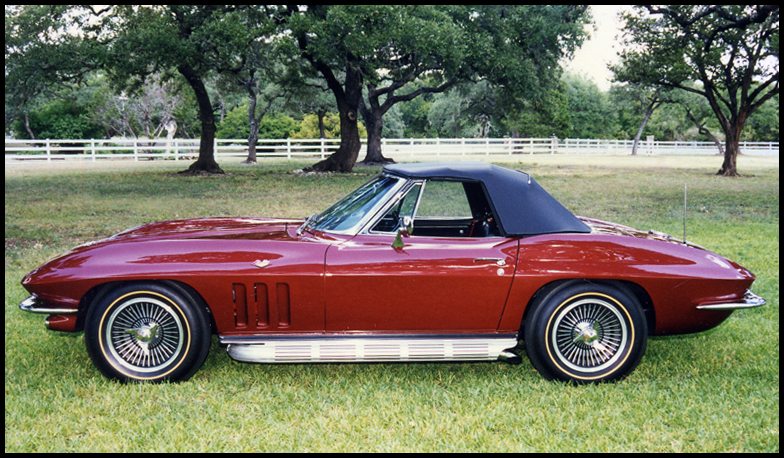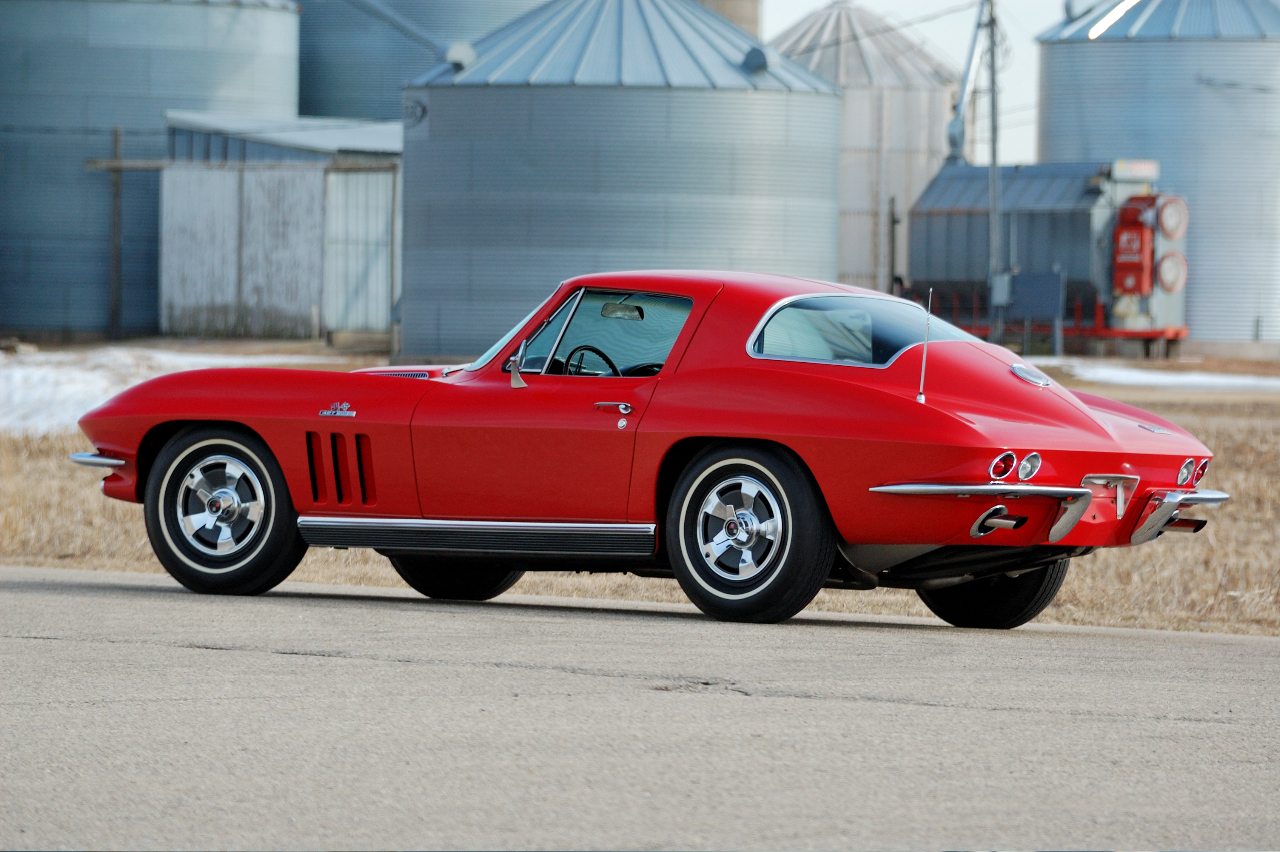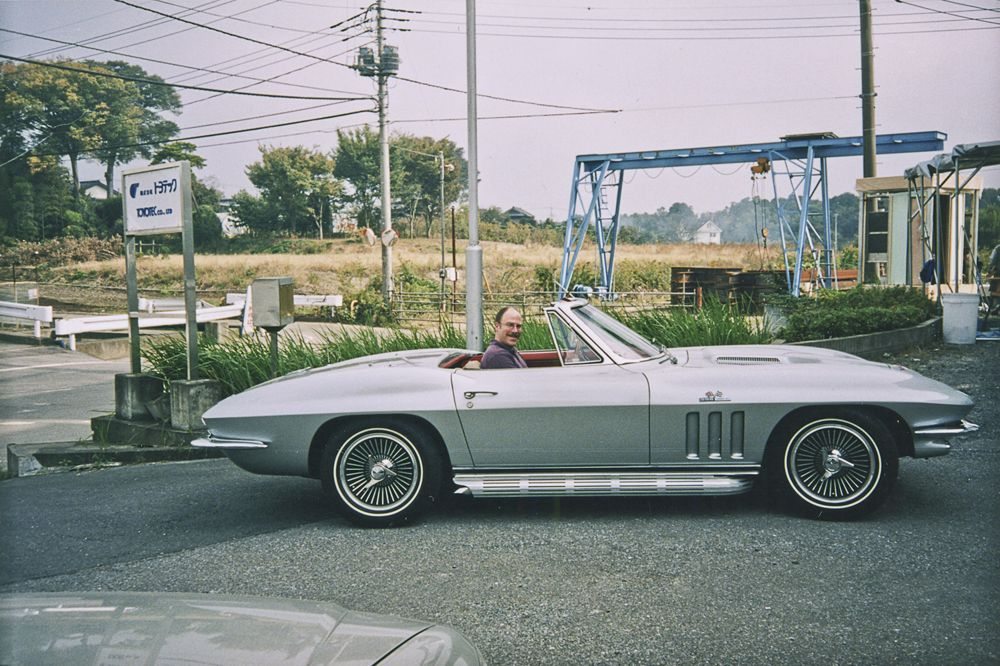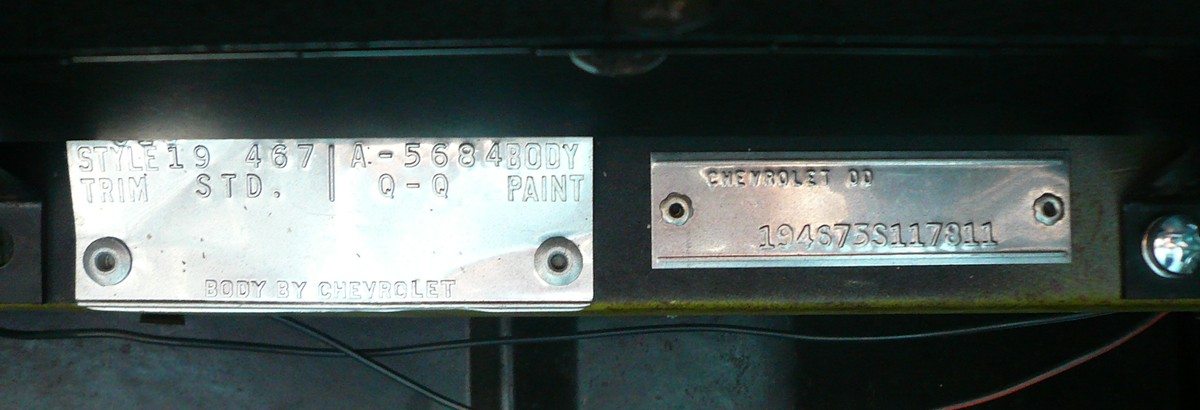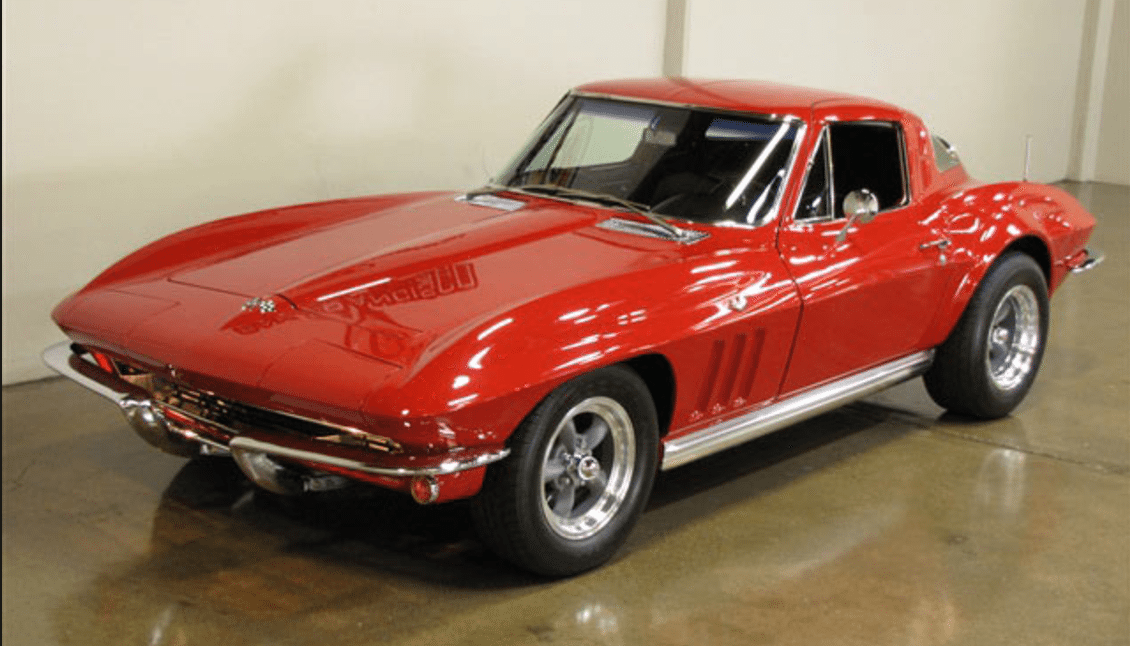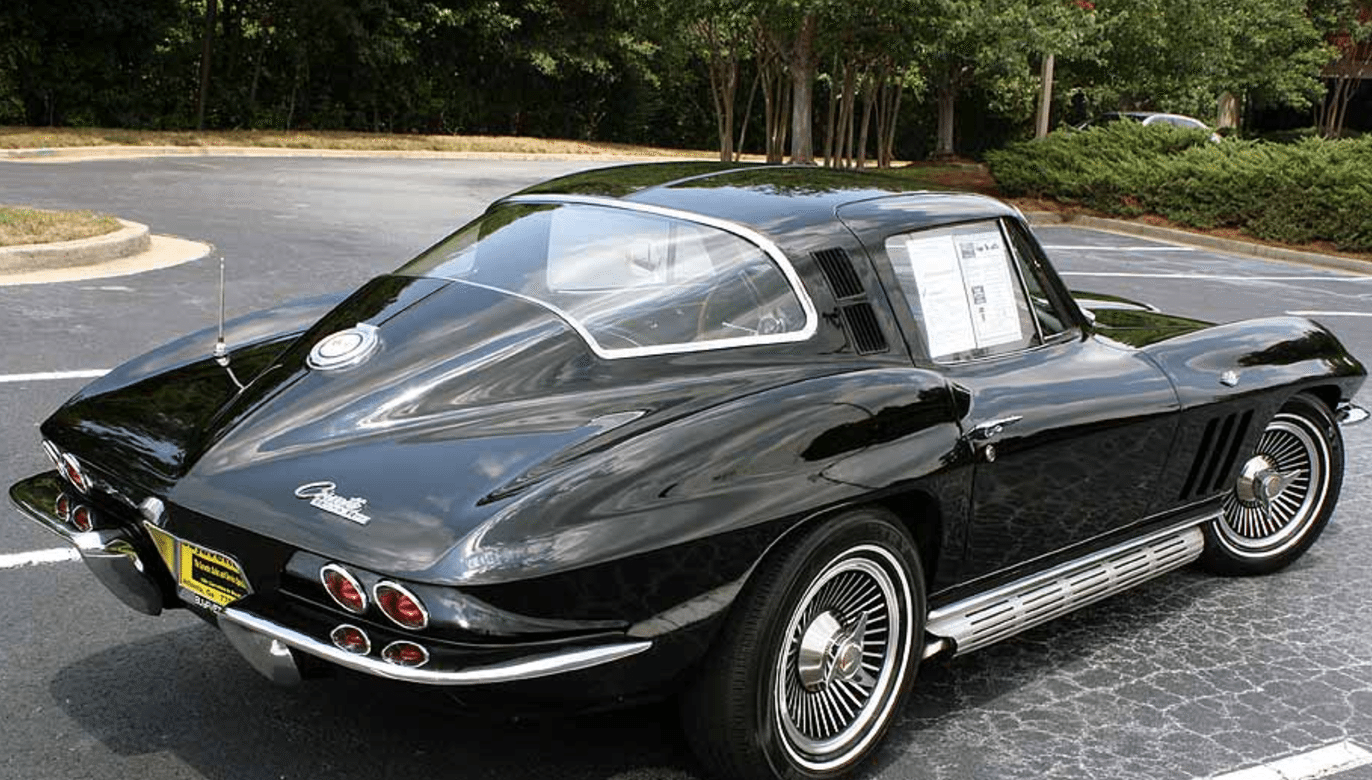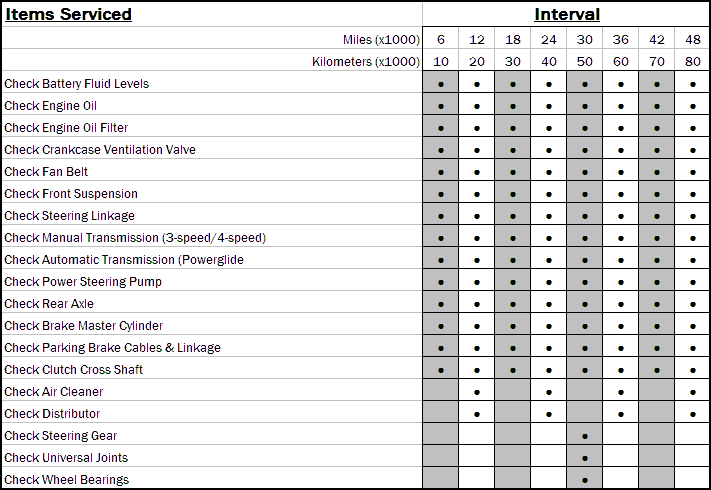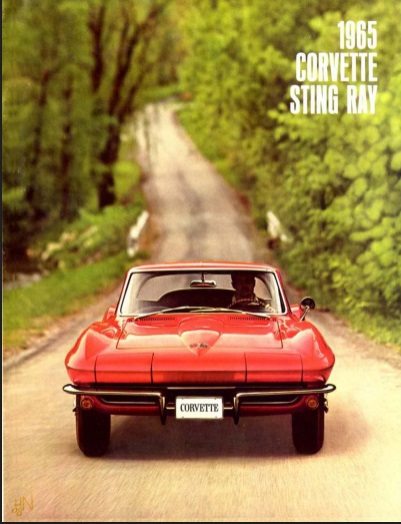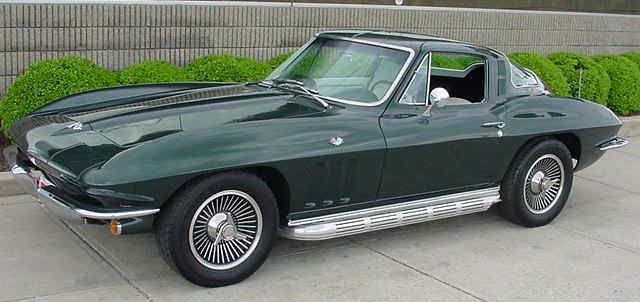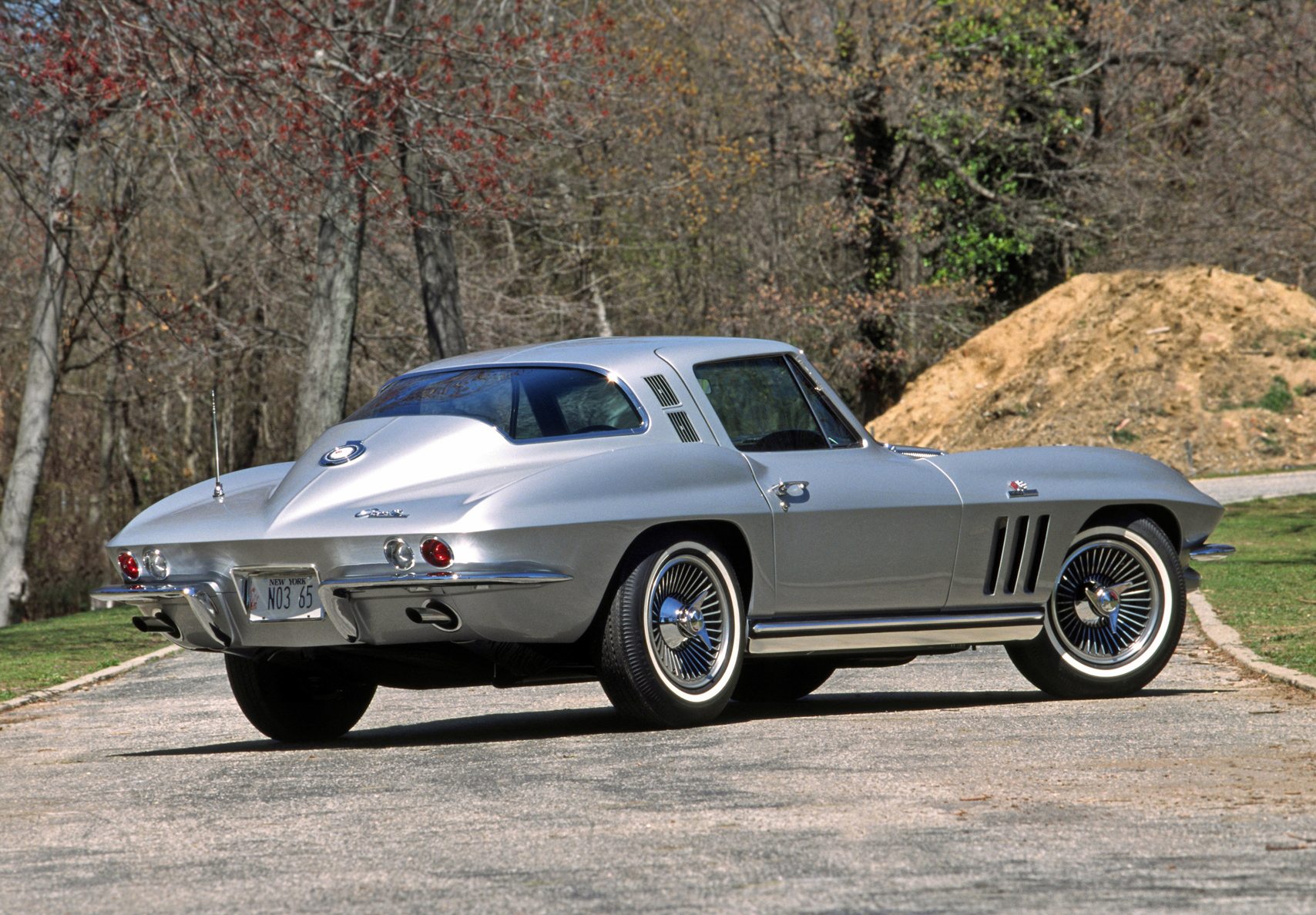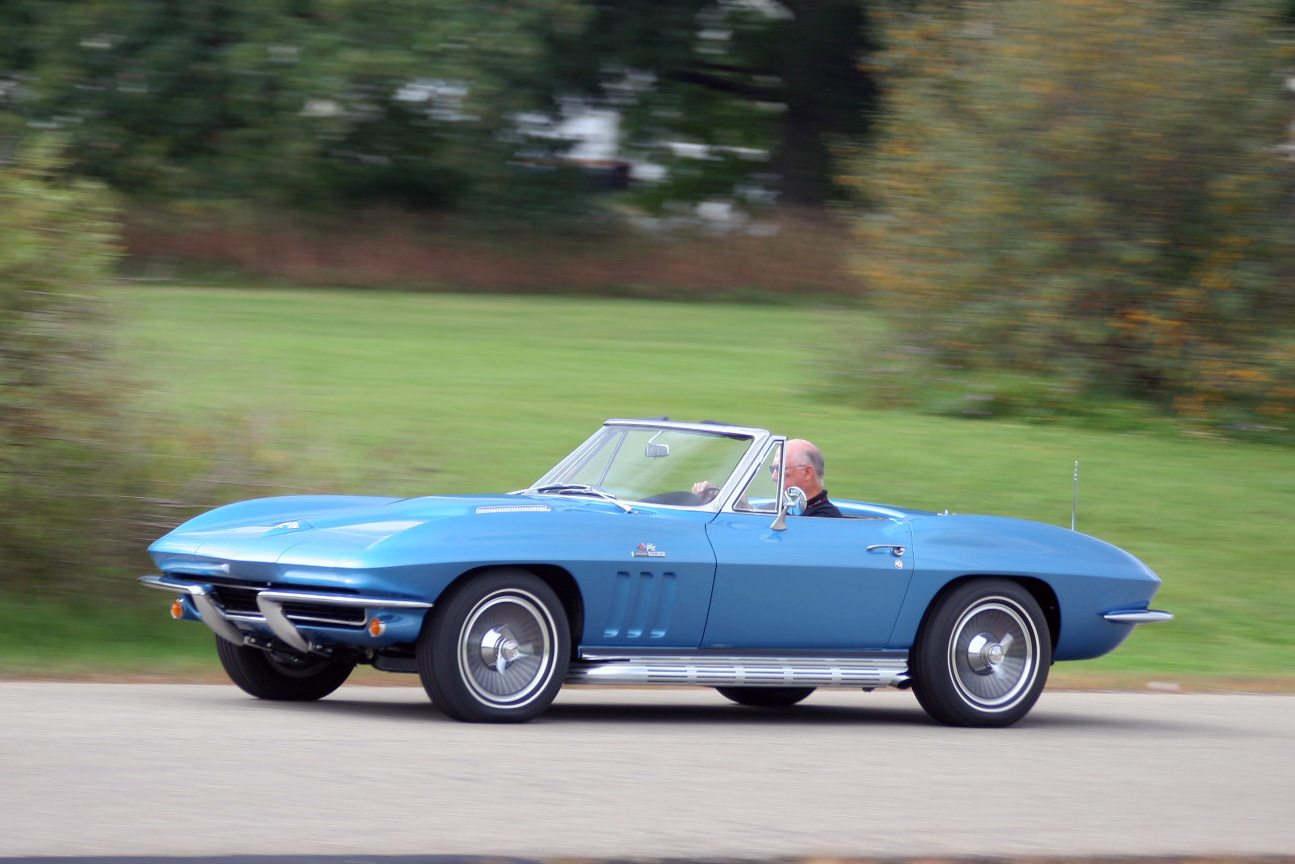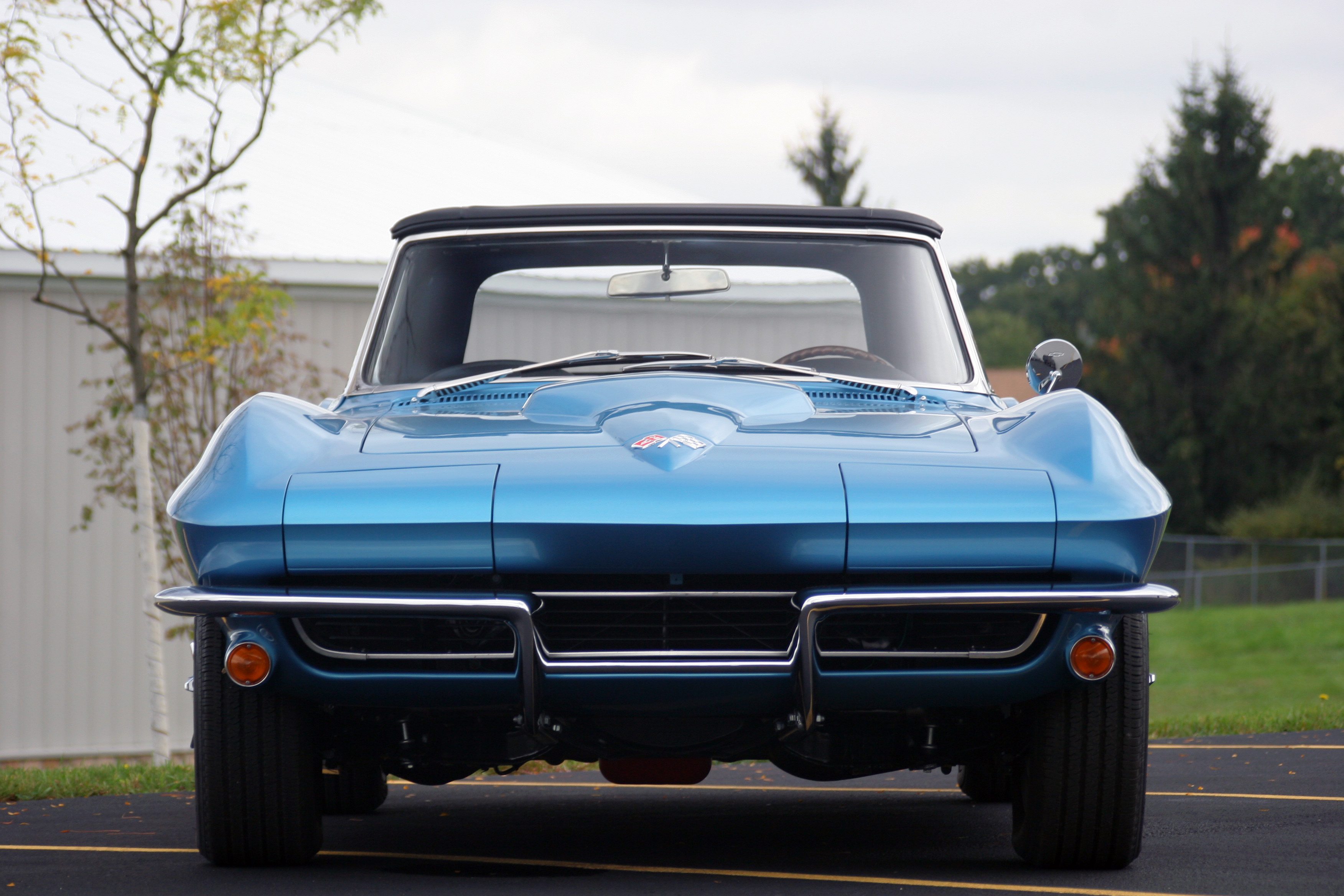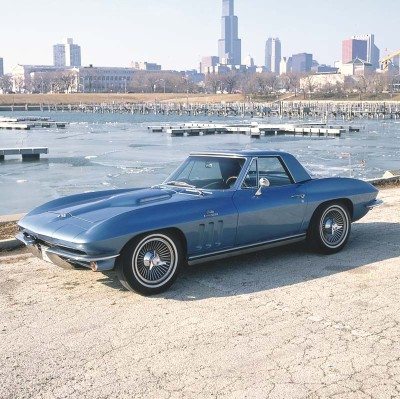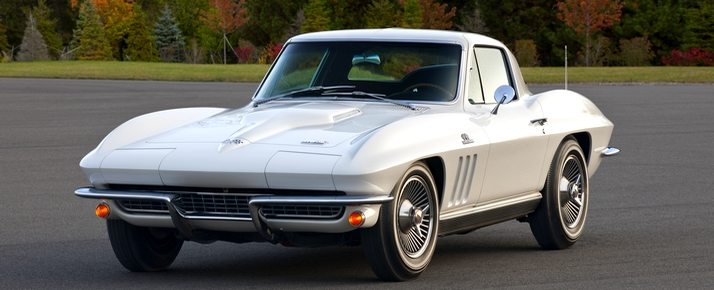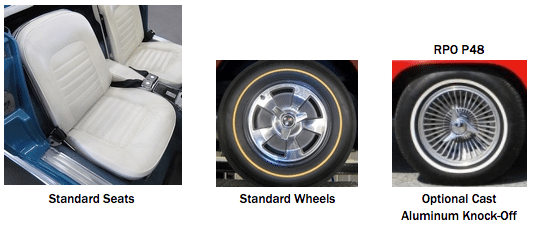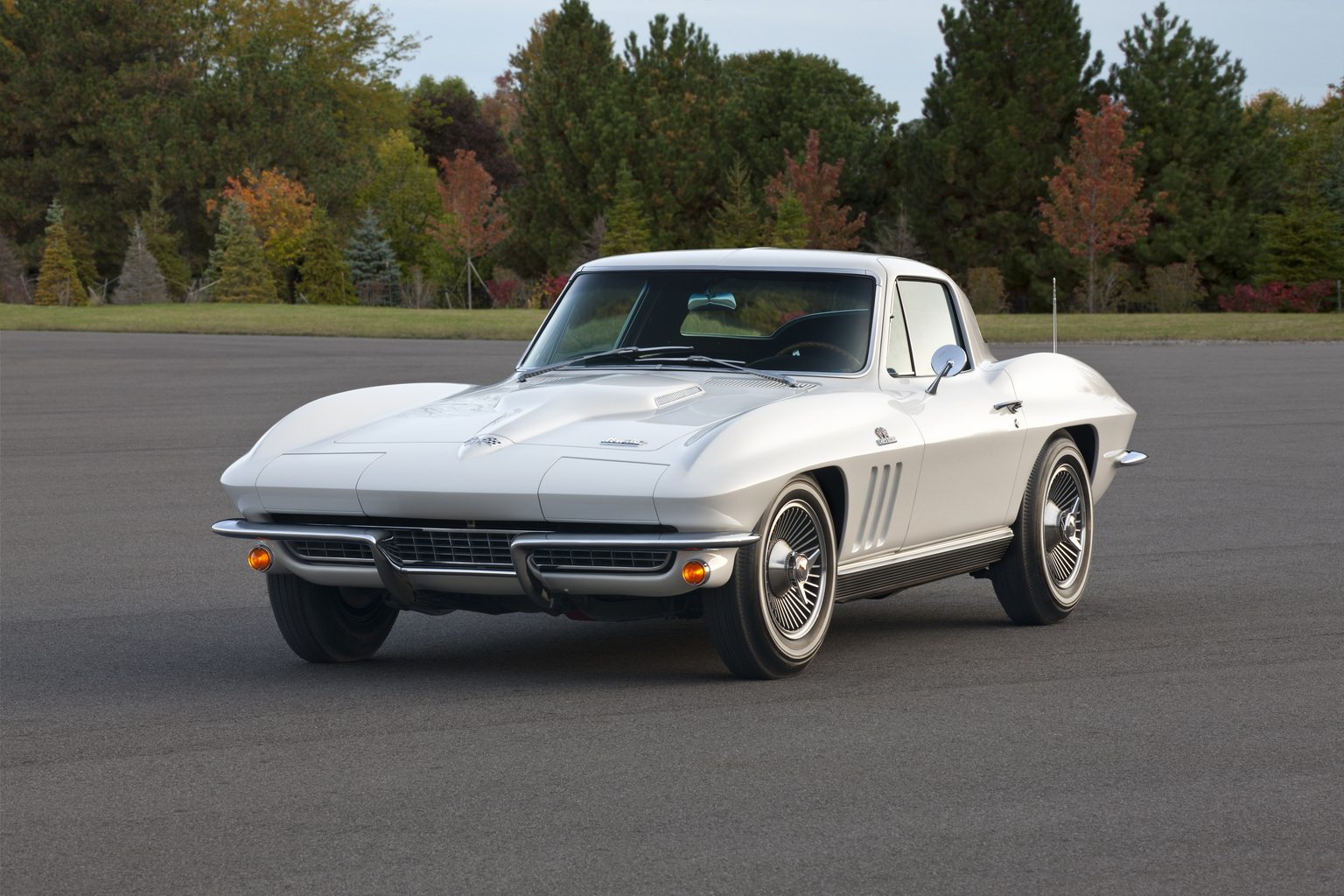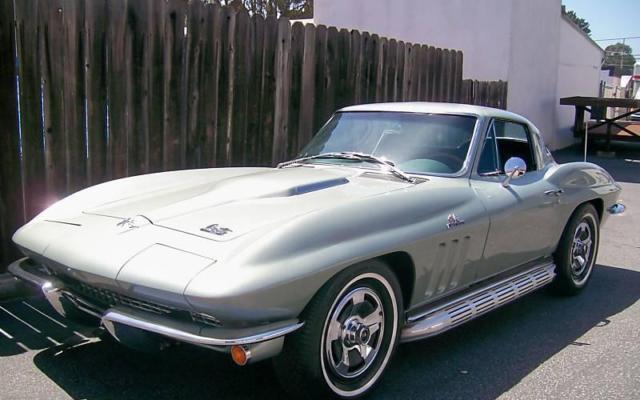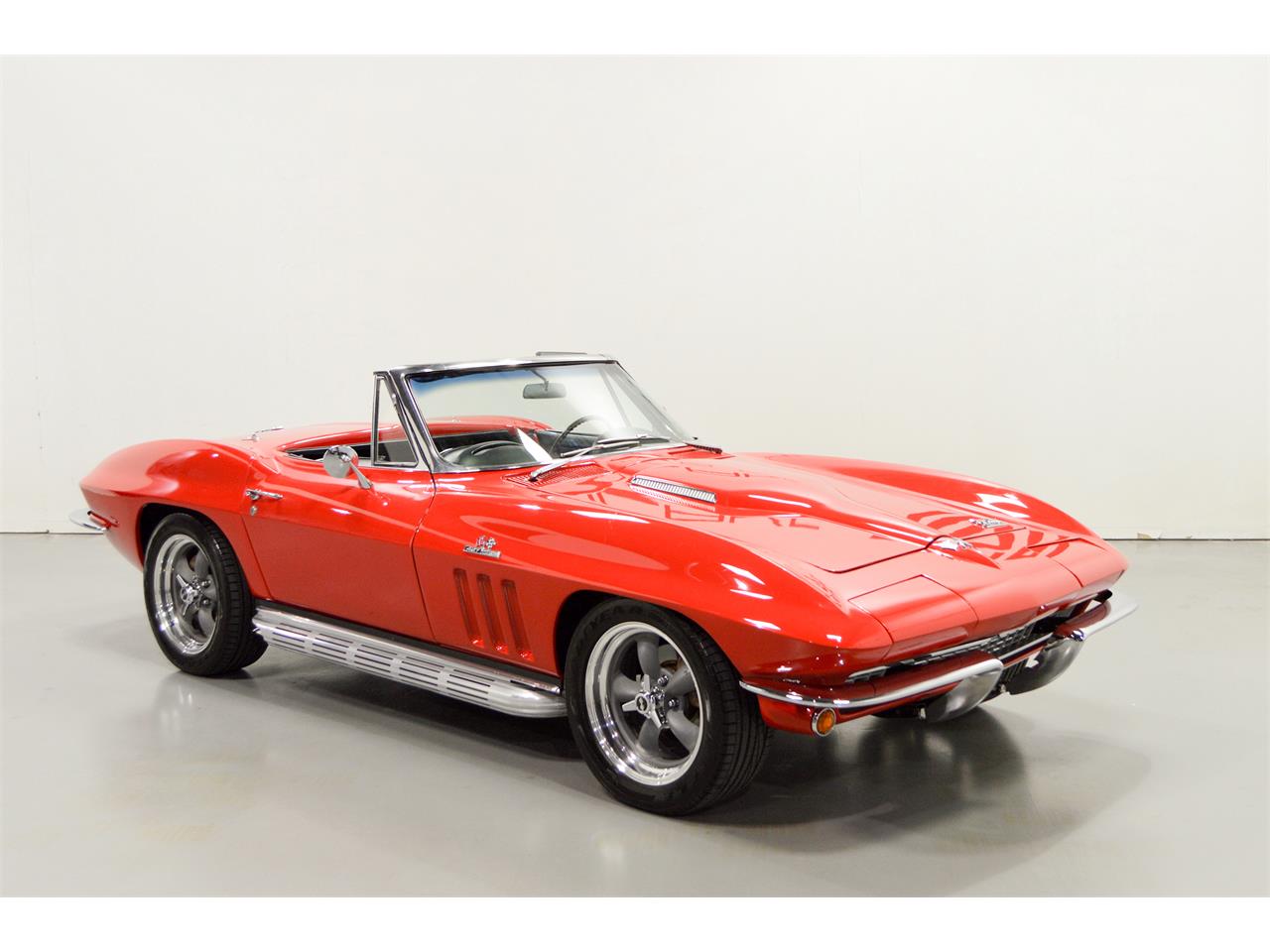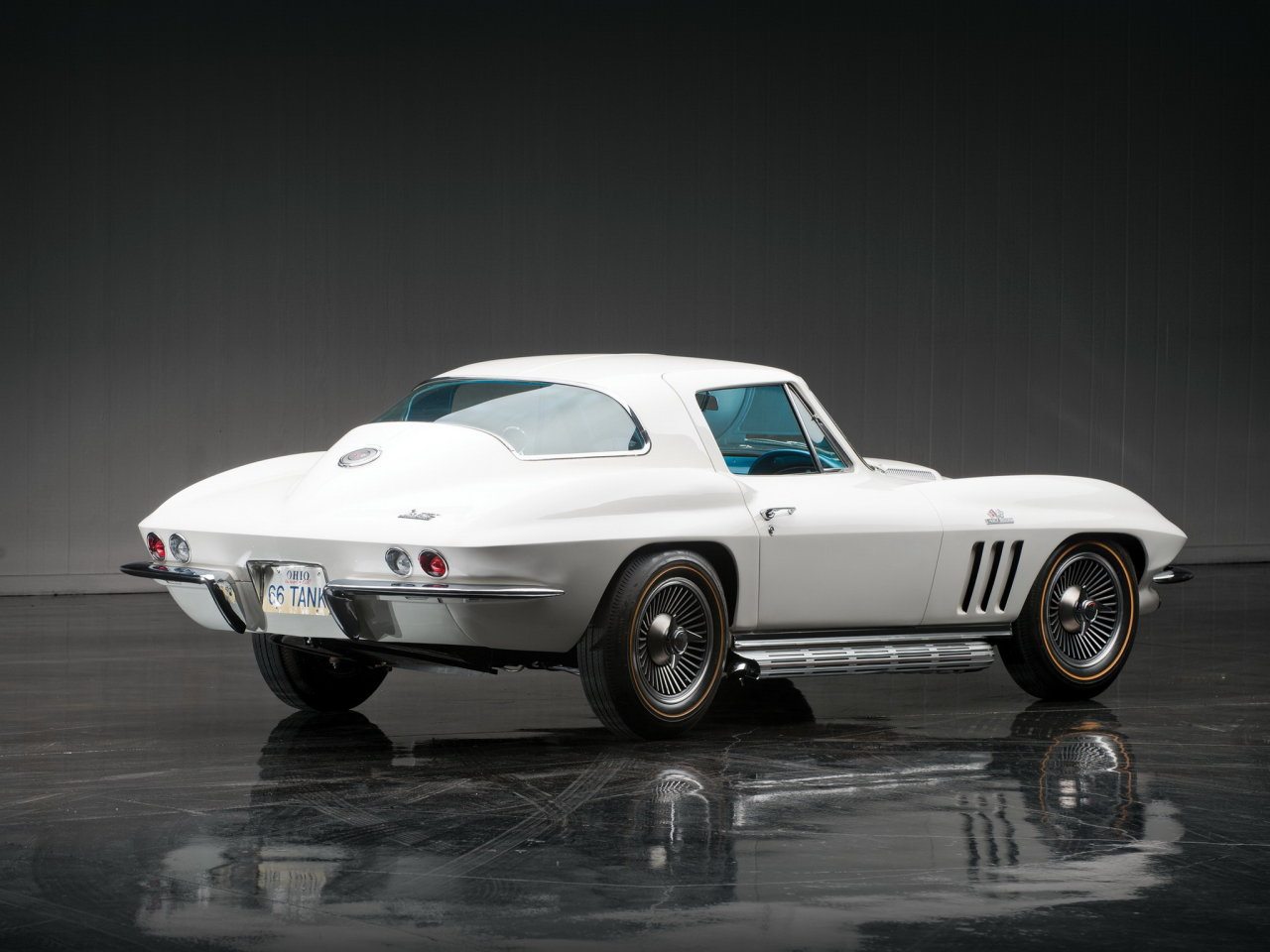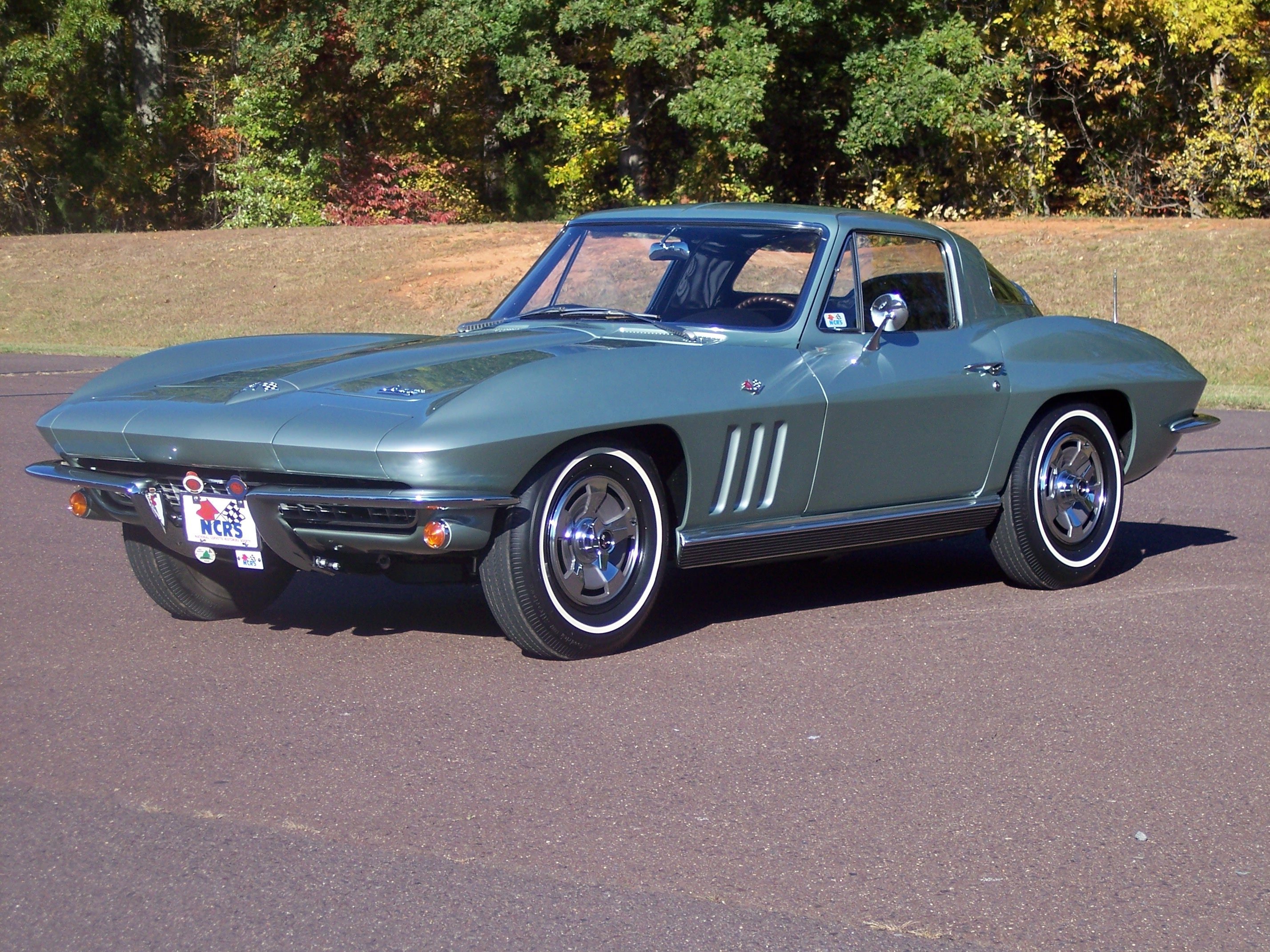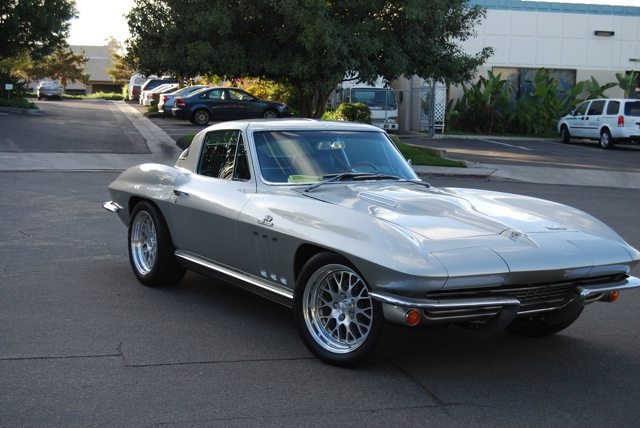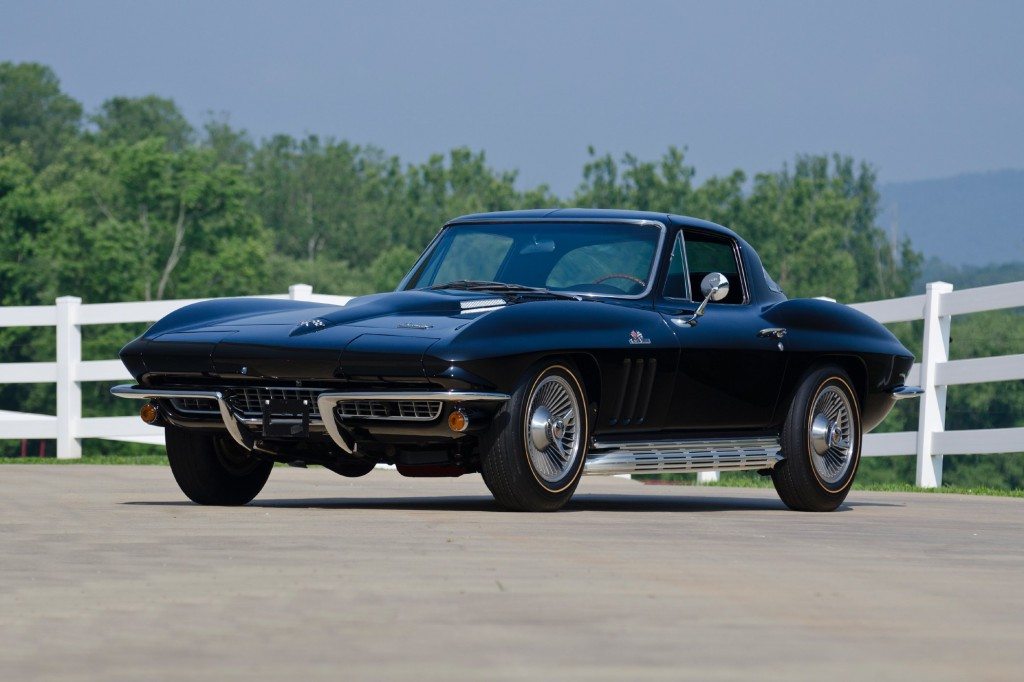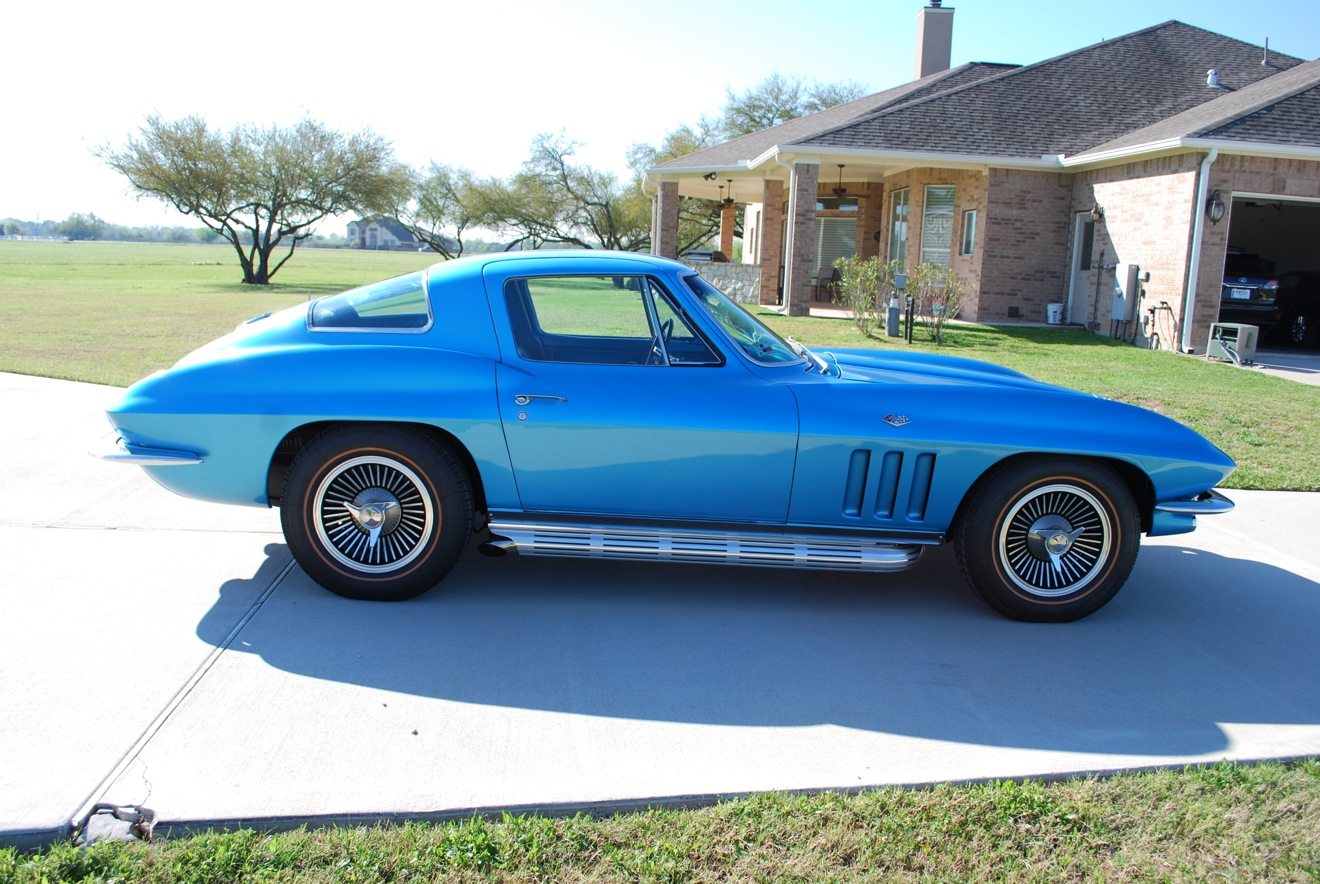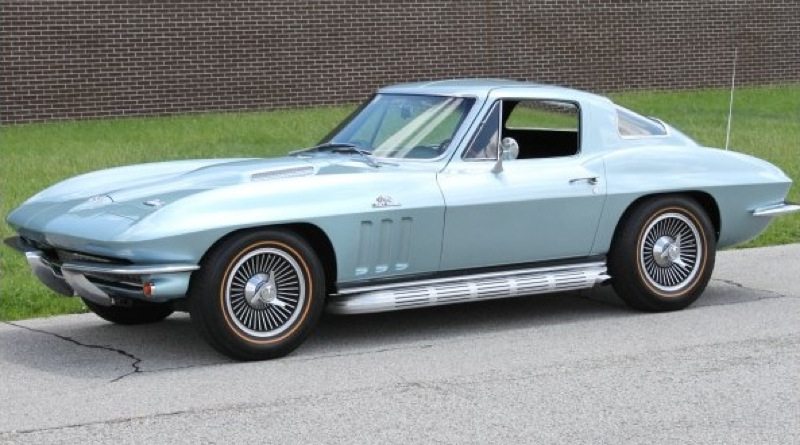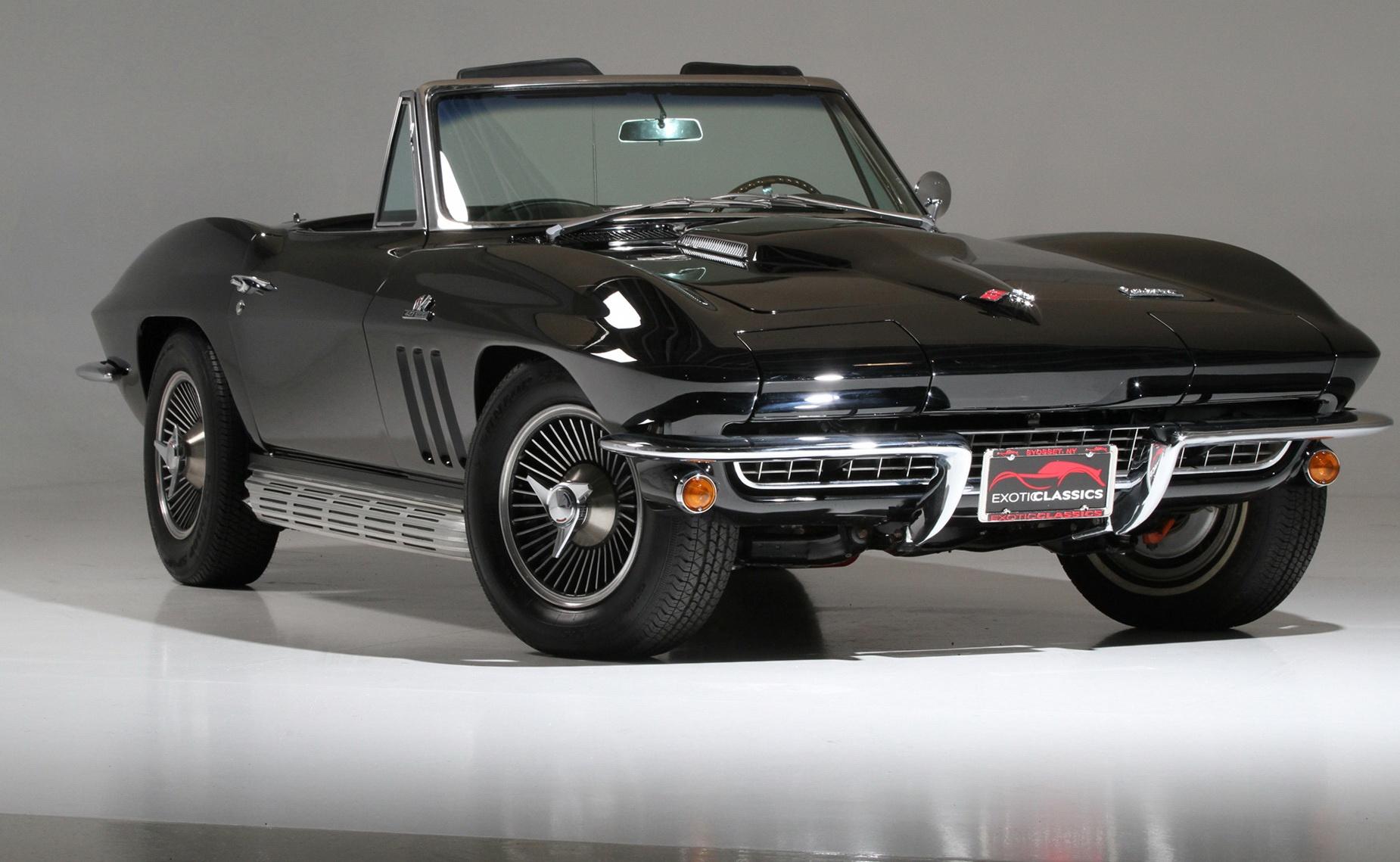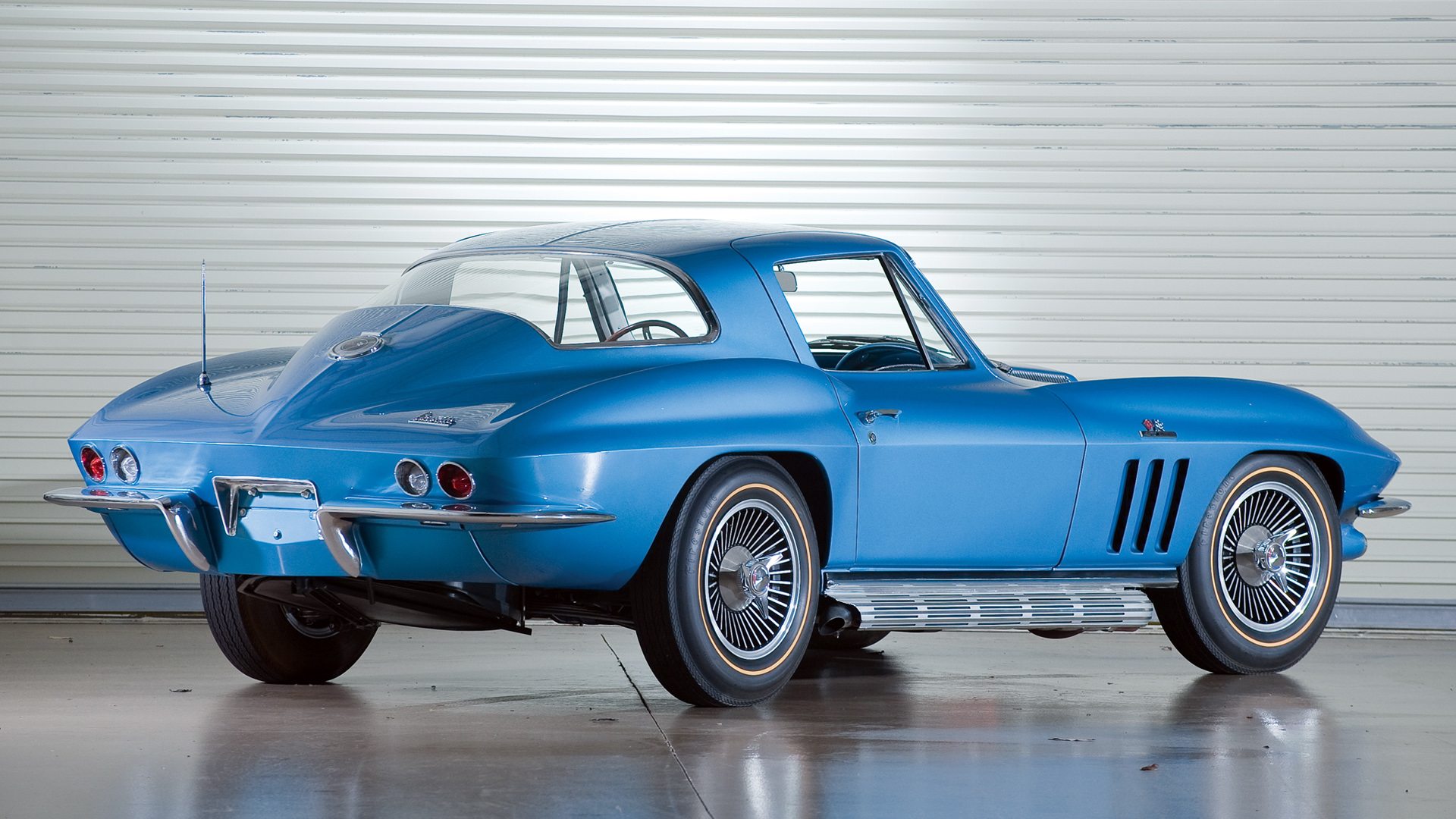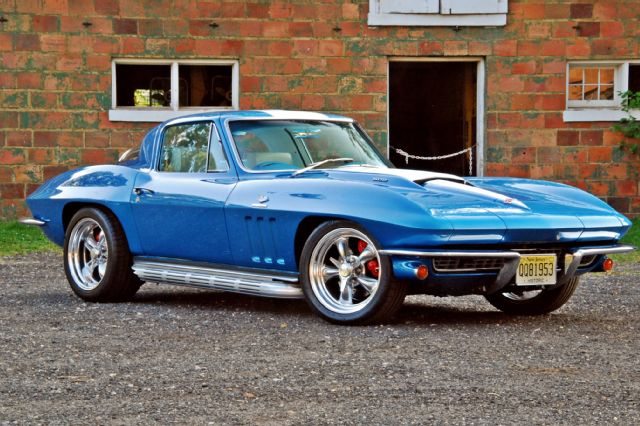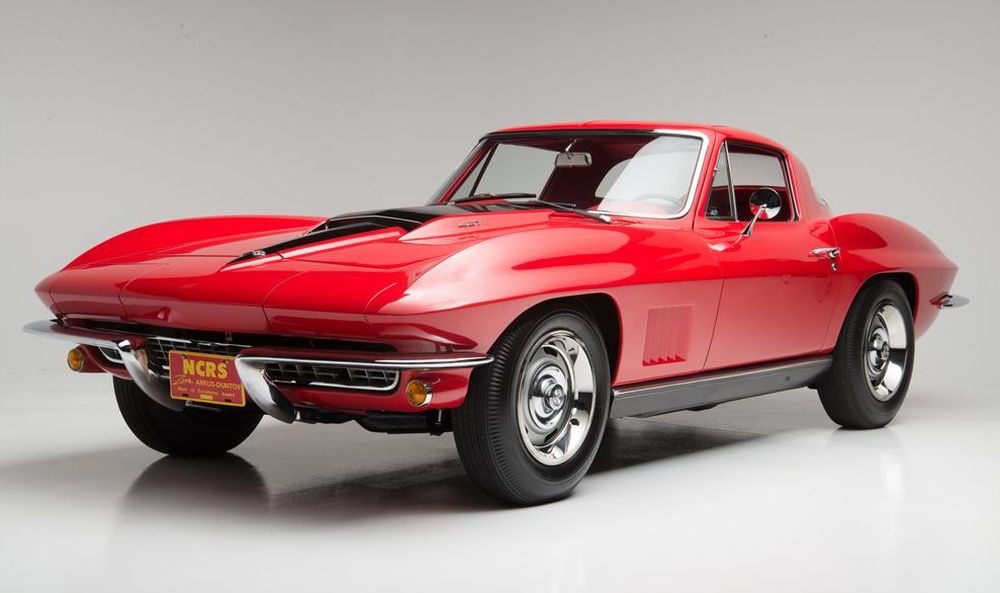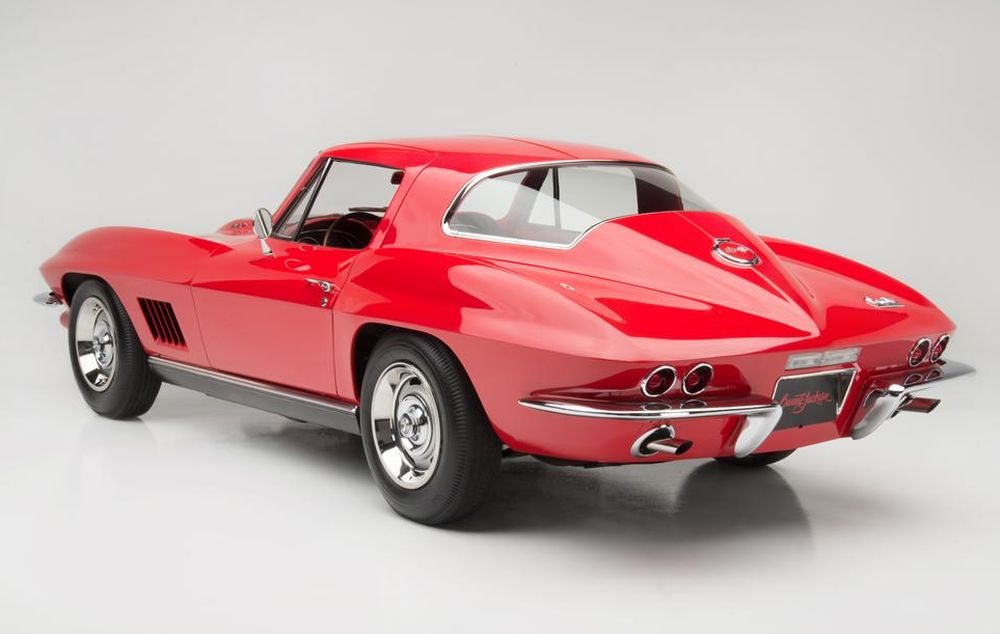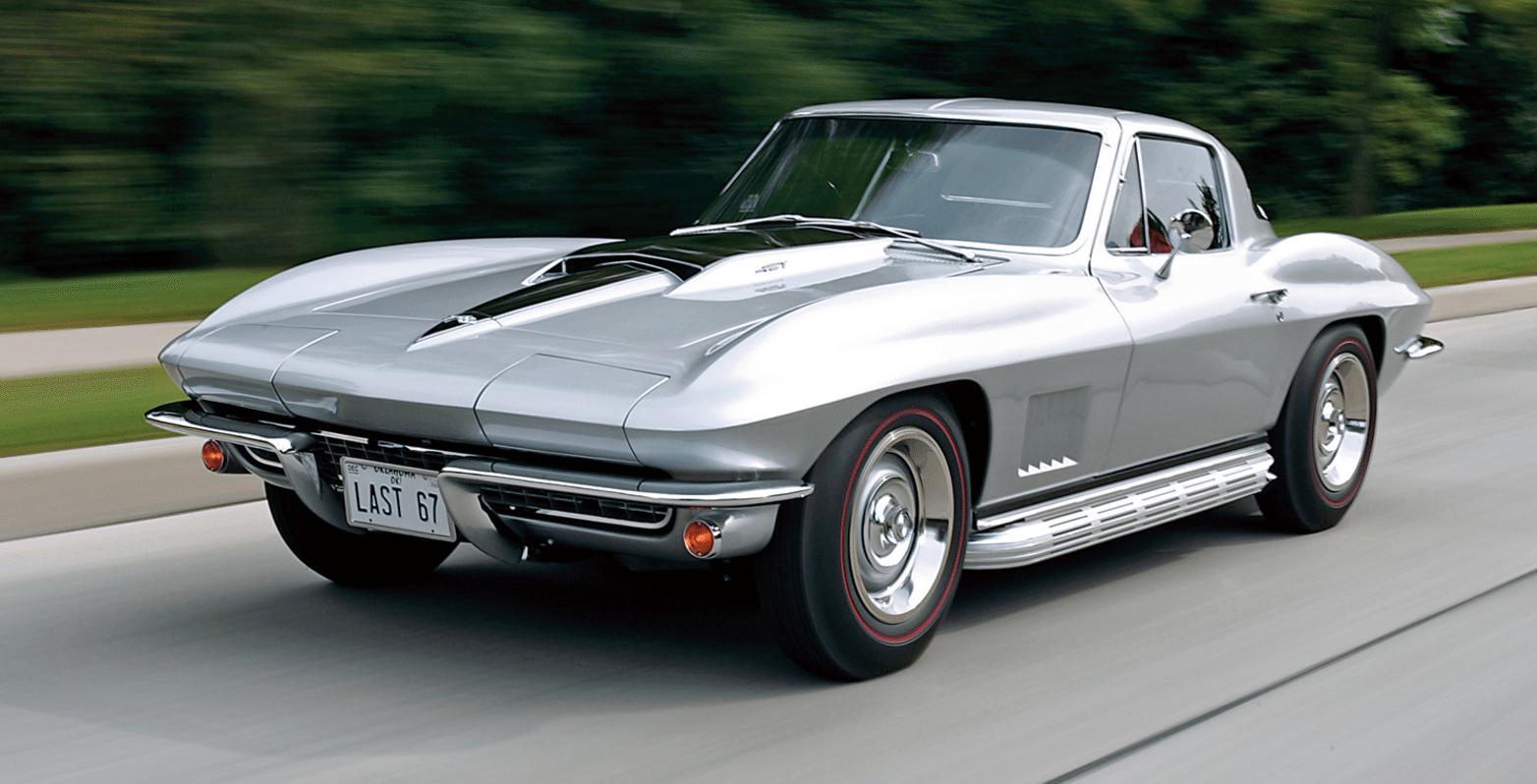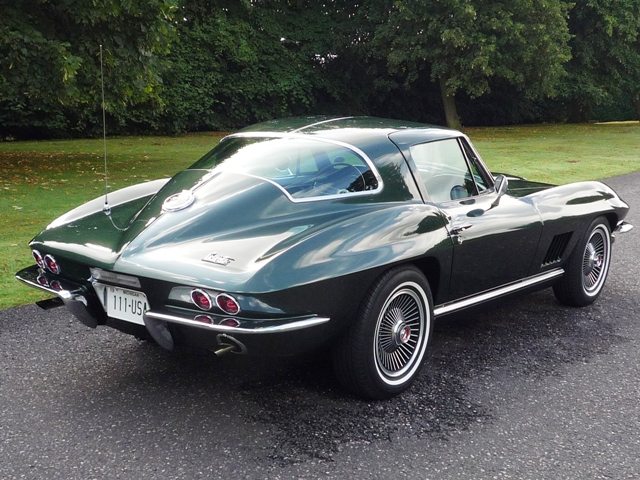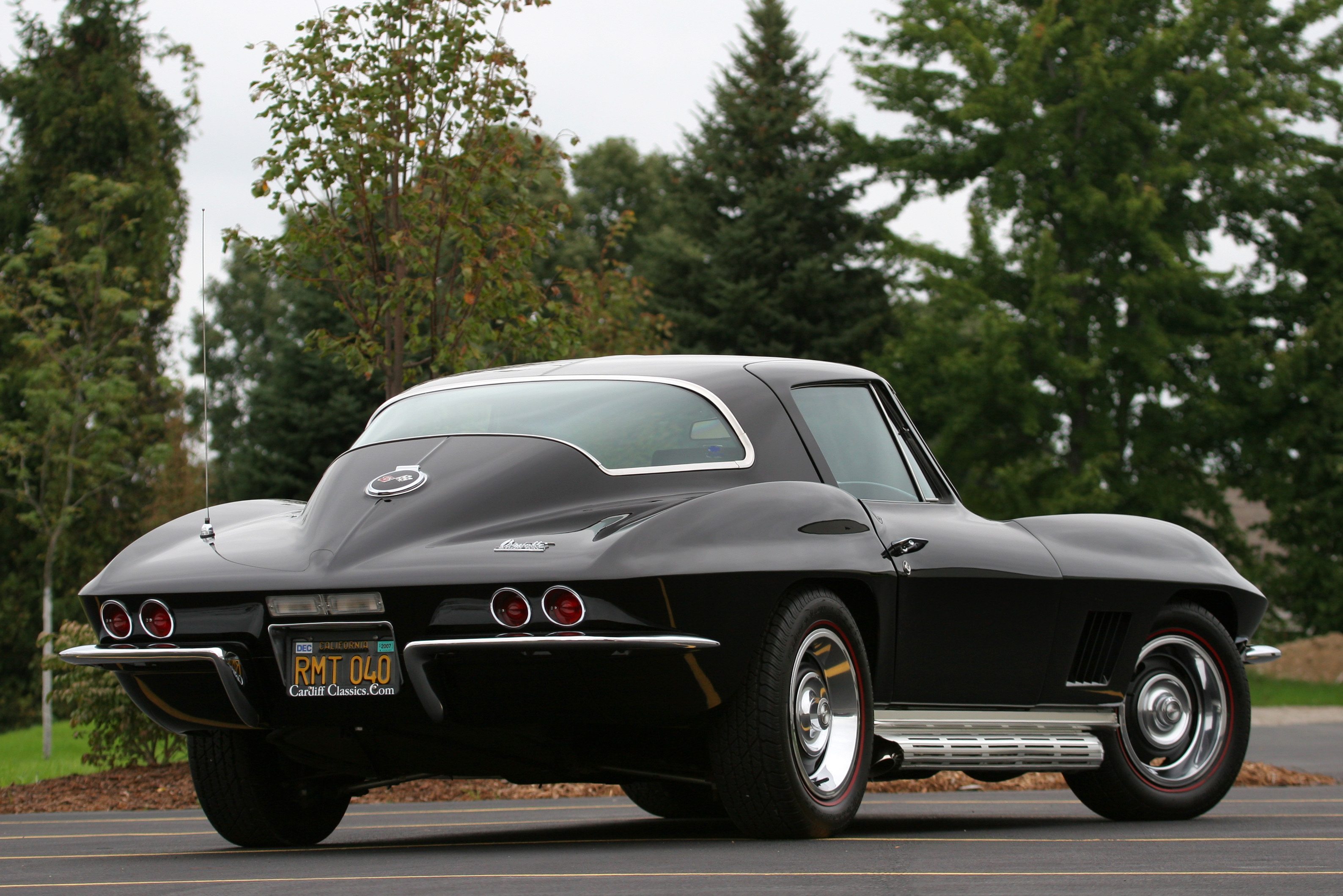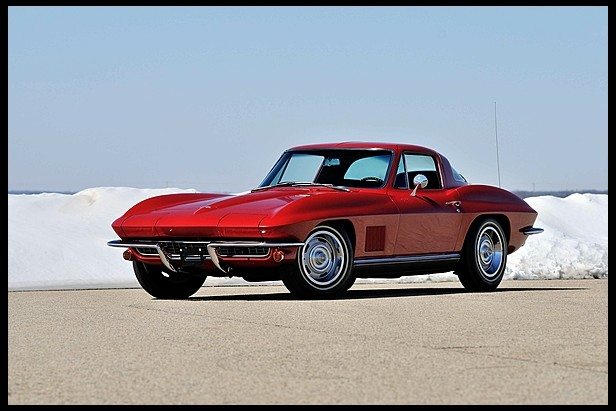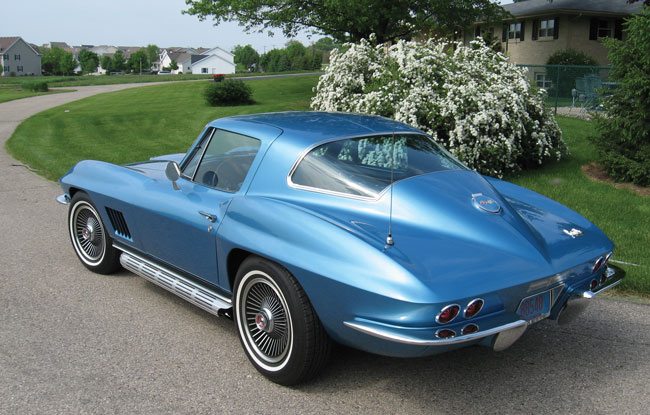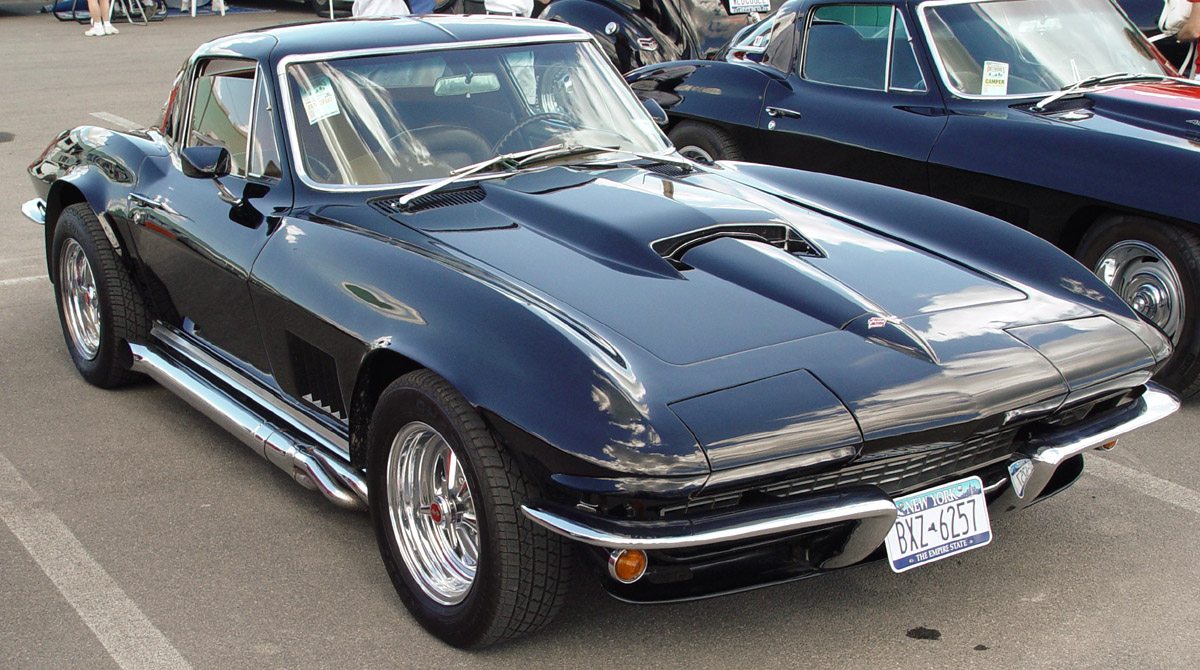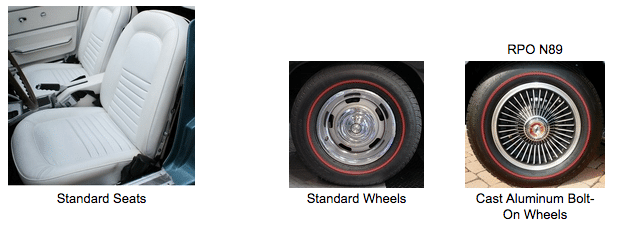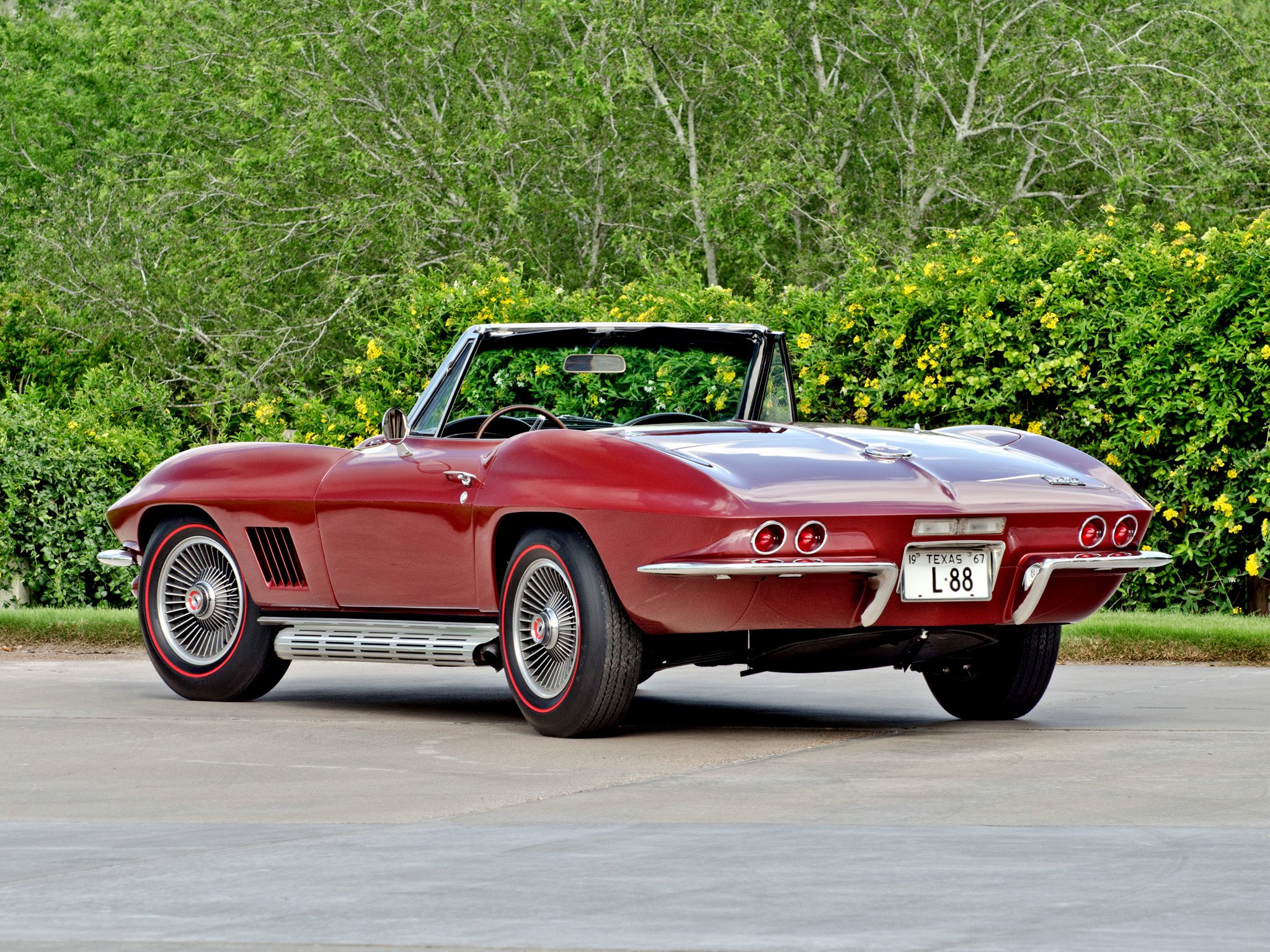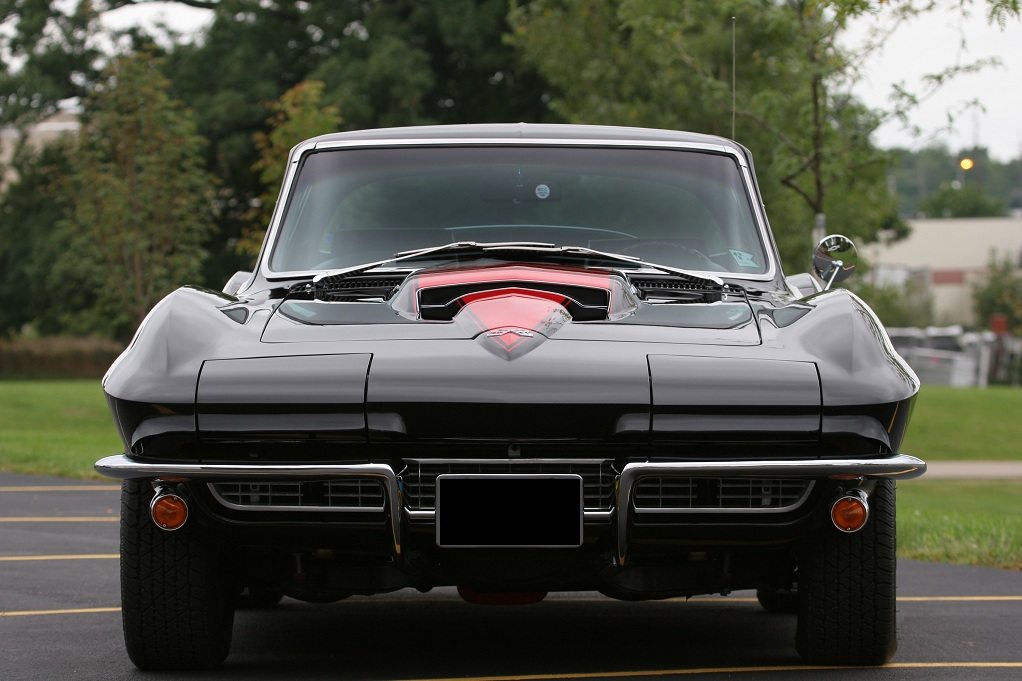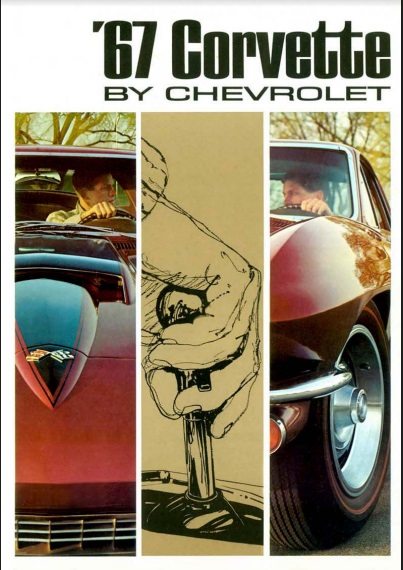ddgermann
Power User
- Thread starter
- #41
Some 1965 Corvette specs and options.
1965 CORVETTE SPECIFICATIONS
1965 CORVETTE MAIN SPECS
MODEL:1965 Chevrolet Corvette
BODY STYLE:Two-door convertible/coupe, front engine, rear wheel drive
MANUFACTURING LOCATION:St. Louis, Missouri
CONSTRUCTION:Fiberglass Reinforced Plastic (FRP or “fiberglass”) body, all welded, full length, ladder construction frame with 5 cross-members. Front section flat;rear section contoured over rear axle. Side-rails and intermediate cross members box construction. Rear crossmember “C” shaped; front crossmember concave for engine clearance.
VEHICLE NUMBERS (VIN):194375S100001 – 194375S123564
ENGINE SUFFIX:HE: 327 CUBIC INCH, 250 HORSEPOWER, MANUAL TRANSMISSION
HF: 327 CUBIC INCH, 300 HORSEPOWER, MANUAL TRANSMISSION
HT: 327 CUBIC INCH, 350 HORSEPOWER, MANUAL TRANSMISSION
HH: 327 CUBIC INCH, 365 HORSEPOWER, MANUAL TRANSMISSION
HG: 327 CUBIC INCH, 375 HORSEPOWER, MANUAL TRANSMISSION
HO: 327 CUBIC INCH, 250 HORSEPOWER, POWERGLIDE AUTOMATIC TRANSMISSION
HP: 327 CUBIC INCH, 300 HORSEPOWER, POWERGLIDE AUTOMATIC TRANSMISSION
IF: 396 CUBIC INCH, 425 HORSEPOWER, 4-SPEED MANUAL TRANSMISSION
ENGINE BLOCK NUMBER:
3782870, 327 CUBIC INCH
3855962, 396 CUBIC INCH
3858180, 327 CUBIC INCH
HEAD NUMBER:
3782461: 327 CUBIC INCH
3856208: 396 CUBIC INCH
CARBURETOR NUMBERS:
CARTER 3696S [HASHTAG]#3846246[/HASHTAG]: 327 CUBIC INCH, 250HP, AUTO TRANS
CARTER 3697S [HASHTAG]#3846247[/HASHTAG]: 327 CUBIC INCH, 250HP, MANUAL TRANS
CARTER 3720SB [HASHTAG]#3851762[/HASHTAG]: 327 CUBIC INCH, 300HP, AUTO TRANS
CARTER 3721SB [HASHTAG]#3851761[/HASHTAG]: 327 CUBIC INCH, 300HP MANUAL TRANS
HOLLEY R2818A [HASHTAG]#3849804[/HASHTAG]: 327 CUBIC INCH, 350HP, 365HP
HOLLEY R3124A [HASHTAG]#3868826[/HASHTAG]: 396 CUBIC INCH, 425HP
FUEL INJECTION NUMBER:ROCHESTER 7017380
DISTRIBUTOR NUMBER:
1111060: 327 CUBIC INCH, 365HP, TRANSISTOR IGNITION
1111064: 327 CUBIC INCH, 375HP, TRANSISTOR IGNITION
1111069: 327 CUBIC INCH, 365HP
1111070: 327 CUBIC INCH, 375HP
1111076: 327 CUBIC INCH, 250HP, 300HP
1111087: 327 CUBIC INCH, 350HP
1111088: 327 CUBIC INCH, 350HP, TRANSISTOR IGNITION
1111093: 396 CUBIC INCH, 425HP
ALTERNATOR NUMBER:
1100693: 327 CUBIC INCH
1100694: 327 CUBIC INCH, AIR CONDITION
1100696: 327 CUBIC INCH, 396 CUBIC INCH, TRANSISTOR IGNITION
1100697: 327 CUBIC INCH, 350HP, 365HP, AIRCON, TRANSISTOR IGNITION
AXLE IDENTIFICATION NUMBER
AK: 3.36:1 RATIO, 327ci
AL: 3.08:1 RATIO, 327ci, 4-SPEED
AN: 3.55:1 RATIO, 327ci, 4-SPEED
AR: 3.08:1 RATIO, 327ci, WIDE-RATIO 4-SPEED
AS: 3.70:1 RATIO, 327ci, CLOSE RATIO 4-SPEED
AM: 3.36:1 RATIO, 327ci, 3-SPEED
AO: 3.70:1 RATIO, 327ci, 4-SPEED
AP: 4.11:1 RATIO, 327ci, 4-SPEED
AQ: 4.56:1 RATIO, 327ci, 4-SPEED
AT: 3.08:1 RATIO, 396ci, 4-SPEED
AU: 3.36:1 RATIO, 396ci, 4-SPEED
AZ: 3.55:1 RATIO, 396ci, 4-SPEED
FA: 3.70:1 RATIO, 396ci, 4-SPEED
FB: 4.11:1 RATIO, 396ci, 4-SPEED
FC: 4.56:1 RATIO, 396ci, 4-SPEED
POSITRACTION AXLE:
1100693: 327 CUBIC INCH
1100694: 327 CUBIC INCH, AIR CONDITION
1100696: 327 CUBIC INCH, 396 CUBIC INCH, TRANSISTOR IGNITION
1100697: 327 CUBIC INCH, 350HP, 365HP, AIRCON, TRANSISTOR IGNITION
ALTERNATOR:
3782870, 327 CUBIC INCH
3855962, 396 CUBIC INCH
3858180, 327 CUBIC INCH
PRODUCTION ENDING VEHICLE:AUG. 1964: 100227, SEP. 1964: 101425, NOV. 1964: 103347, DEC. 1964:105754, JAN. 1965: 108442, FEB. 1965: 111059, MAR. 1965: 113936, APR. 1965: 116516, MAY 1965: 118753, JUN. 1965: 121216, JUL. 1965: 123562, AUG. 1965: 123564
1965 CORVETTE PRICING & OPTIONS
CODE ESCRIPTION:QUANTITY:RETAIL PRICE:
ESCRIPTION:QUANTITY:RETAIL PRICE:
19437Base Corvette Sport Coupe8,186$4,321.00
19467Base Corvette Convertible15,377 $4,106.00
402Genuine Leather Seats, Black– $80.70
408Genuine Leather Seats, Red– $80.70
415Genuine Leather Seats, Blue– $80.70
421Genuine Leather Seats, Saddle– $80.70
427Genuine Leather Seats, Silver– $80.70
431Genuine Leather Seats, Green– $80.70
436
Genuine Leather Seats, Maroon–$80.70
438Genuine Leather Seats, White, (Black Instrument & Carpet) – $80.70
451Genuine Leather Seats, White, (Red Instrument & Carpet)– $80.70
A01Genuine Leather Seats, White, (Blue Instrument & Carpet)–$16.15
A02Soft Ray Tinted Glass, All Windows7,624 $10.80
A31Soft Ray Tinted Glass, Windshield3,809 $59.20
C07Power Windows7,787 $236.75
C48Auxillary Hardtop (for convertibles)39$100.00
C60Heater and Defroster Deletion (credit)2,423 $421.80
F40Air Conditioning975 $37.70
G81Special Front and Rear Suspenion19,965$43.05
G91Positraction Rear Axle, all ratios1,886 $2.20
J50Special Highway Axle, 3.08:1 ratio4,044 $43.05
J61Power Brakes316 -$64.50
K66Drum Brakes (substitution credit)3,686 $75.35
L75Transistor Ignition System8,358 $53.80
L76327ci, 300hp Engine5,011 $129.15
L78327ci, 365hp Engine2,157 $292.70
L79396ci, 425hp Engine4,716 $107.60
L84327ci, 350hp Engine771 $538.00
M20327ci, 375hp Engine (fuel injection)21,107 $188.30
M224-Speed Manual Transmission30 $171.00
M354-Speed Manual Trans., Close Ratio, Heavy Duty2,021 $199.10
N03Powerglide Automatic Transmission41 $202.30
N1136 Gallon Fuel Tank (for coupe)2,468 $37.70
N14Off Road Exhaust System759 $134.50
N32Side Mount Exhaust System2,259 $48.45
N36Teakwood Steering Wheel2,259 $43.05
N40
Telescopic Steering Column3,236 $43.05
P48Power Steering1,116 $322.80
P91Cast Aluminum Knock-Off Wheels (5)168 $15.70
P92Blackwall Tires, 7.75 x 15 (nylon cord)19,300$31.85
T01Whitewall Tires, 7.75 x 15 (rayon cord)989 $50.05
U69Goldwall Tires, 7.75 x 15 (nylon cord)22,113$203.40
Z01AM-FM Radio15,397 $16.15
1965 CORVETTE EXTERIOR & INTERIOR COLORS
EXTERIOR COLORS
CODEEXTERIORTOTALSOFT TOPWHEELSINTERIOR
AATuxedo Black1,191Black, White,BlackBlack, Blue, Green, Maroon, Red, Saddle, Silver, White
CCErmine White2,216BeigeBlackBlack, Blue, Green, Maroon, Red, Saddle, Silver, White
UURally Red3,688Black, WhiteBlackBlack, Red, White
FFNassau Blue6,022BeigeBlackBlack, Blue, White
XXGoldwood Yellow1,275Black, WhiteBlackBlack, White
QQSilver Pearl2,552BeigeBlack
Black, Red, Silver
GGGlen Green3,782Black, WhiteBlackBlack Green, Saddle, White
MMMilano Maroon2,831BeigeBlackBlack, Red, Maroon, Saddle, White
INTERIOR COLORS (VINYL)
Interior Colors (Vinyl)Spec
Black (Vinyl)
STD
Red (Vinyl)
407
Blue (Vinyl)
414
Saddle (Vinyl)
420
Green (Vinyl)
430
Maroon (Vinyl)
435
INTERIOR COLORS (LEATHER)
Interior Colors (Leather)Code
Black (Leather)
402
Red (Leather)
408
Blue (Leather)
415
Saddle (Leather)
421
Green (Leather)
431
Maroon (Leather)
436
INTERIOR COLORS (TWO-TONE VINYL)
Interior Colors (Two-Tone Vinyl)Code
Silver/Black Trim (Vinyl)
Black Instrument Panel, Medium Gray Carpet
426
White/Black Trim (Vinyl)Black Instrument Panel, Black Carpet437
White/Red Trim (Vinyl)Red Instrument Panel, Red Carpet443
White/Blue Trim (Vinyl)Medium Blue Instrument Panel, Medium Blue Carpet450
INTERIOR COLORS (TWO-TONE LEATHER)
Interior Colors (Two-Tone Leather)Code
Silver/Black Trim (Leather)
Black Instrument Panel, Medium Gray Carpet
427
White/Black Trim (Leather)Black Instrument Panel, Black Carpet438
White/Red Trim (Leather)Red Instrument Panel, Red Carpet444
White/Blue Trim (Leather)Blue Instrument Panel, Saddle Tan Carpet451

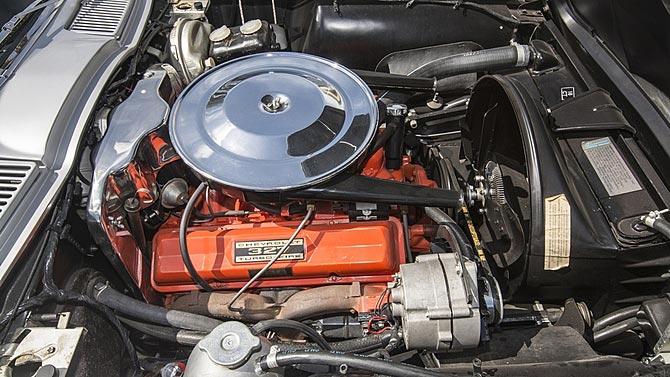
1965 CORVETTE SPECIFICATIONS
1965 CORVETTE MAIN SPECS
MODEL:1965 Chevrolet Corvette
BODY STYLE:Two-door convertible/coupe, front engine, rear wheel drive
MANUFACTURING LOCATION:St. Louis, Missouri
CONSTRUCTION:Fiberglass Reinforced Plastic (FRP or “fiberglass”) body, all welded, full length, ladder construction frame with 5 cross-members. Front section flat;rear section contoured over rear axle. Side-rails and intermediate cross members box construction. Rear crossmember “C” shaped; front crossmember concave for engine clearance.
VEHICLE NUMBERS (VIN):194375S100001 – 194375S123564
ENGINE SUFFIX:HE: 327 CUBIC INCH, 250 HORSEPOWER, MANUAL TRANSMISSION
HF: 327 CUBIC INCH, 300 HORSEPOWER, MANUAL TRANSMISSION
HT: 327 CUBIC INCH, 350 HORSEPOWER, MANUAL TRANSMISSION
HH: 327 CUBIC INCH, 365 HORSEPOWER, MANUAL TRANSMISSION
HG: 327 CUBIC INCH, 375 HORSEPOWER, MANUAL TRANSMISSION
HO: 327 CUBIC INCH, 250 HORSEPOWER, POWERGLIDE AUTOMATIC TRANSMISSION
HP: 327 CUBIC INCH, 300 HORSEPOWER, POWERGLIDE AUTOMATIC TRANSMISSION
IF: 396 CUBIC INCH, 425 HORSEPOWER, 4-SPEED MANUAL TRANSMISSION
ENGINE BLOCK NUMBER:
3782870, 327 CUBIC INCH
3855962, 396 CUBIC INCH
3858180, 327 CUBIC INCH
HEAD NUMBER:
3782461: 327 CUBIC INCH
3856208: 396 CUBIC INCH
CARBURETOR NUMBERS:
CARTER 3696S [HASHTAG]#3846246[/HASHTAG]: 327 CUBIC INCH, 250HP, AUTO TRANS
CARTER 3697S [HASHTAG]#3846247[/HASHTAG]: 327 CUBIC INCH, 250HP, MANUAL TRANS
CARTER 3720SB [HASHTAG]#3851762[/HASHTAG]: 327 CUBIC INCH, 300HP, AUTO TRANS
CARTER 3721SB [HASHTAG]#3851761[/HASHTAG]: 327 CUBIC INCH, 300HP MANUAL TRANS
HOLLEY R2818A [HASHTAG]#3849804[/HASHTAG]: 327 CUBIC INCH, 350HP, 365HP
HOLLEY R3124A [HASHTAG]#3868826[/HASHTAG]: 396 CUBIC INCH, 425HP
FUEL INJECTION NUMBER:ROCHESTER 7017380
DISTRIBUTOR NUMBER:
1111060: 327 CUBIC INCH, 365HP, TRANSISTOR IGNITION
1111064: 327 CUBIC INCH, 375HP, TRANSISTOR IGNITION
1111069: 327 CUBIC INCH, 365HP
1111070: 327 CUBIC INCH, 375HP
1111076: 327 CUBIC INCH, 250HP, 300HP
1111087: 327 CUBIC INCH, 350HP
1111088: 327 CUBIC INCH, 350HP, TRANSISTOR IGNITION
1111093: 396 CUBIC INCH, 425HP
ALTERNATOR NUMBER:
1100693: 327 CUBIC INCH
1100694: 327 CUBIC INCH, AIR CONDITION
1100696: 327 CUBIC INCH, 396 CUBIC INCH, TRANSISTOR IGNITION
1100697: 327 CUBIC INCH, 350HP, 365HP, AIRCON, TRANSISTOR IGNITION
AXLE IDENTIFICATION NUMBER
AK: 3.36:1 RATIO, 327ci
AL: 3.08:1 RATIO, 327ci, 4-SPEED
AN: 3.55:1 RATIO, 327ci, 4-SPEED
AR: 3.08:1 RATIO, 327ci, WIDE-RATIO 4-SPEED
AS: 3.70:1 RATIO, 327ci, CLOSE RATIO 4-SPEED
AM: 3.36:1 RATIO, 327ci, 3-SPEED
AO: 3.70:1 RATIO, 327ci, 4-SPEED
AP: 4.11:1 RATIO, 327ci, 4-SPEED
AQ: 4.56:1 RATIO, 327ci, 4-SPEED
AT: 3.08:1 RATIO, 396ci, 4-SPEED
AU: 3.36:1 RATIO, 396ci, 4-SPEED
AZ: 3.55:1 RATIO, 396ci, 4-SPEED
FA: 3.70:1 RATIO, 396ci, 4-SPEED
FB: 4.11:1 RATIO, 396ci, 4-SPEED
FC: 4.56:1 RATIO, 396ci, 4-SPEED
POSITRACTION AXLE:
1100693: 327 CUBIC INCH
1100694: 327 CUBIC INCH, AIR CONDITION
1100696: 327 CUBIC INCH, 396 CUBIC INCH, TRANSISTOR IGNITION
1100697: 327 CUBIC INCH, 350HP, 365HP, AIRCON, TRANSISTOR IGNITION
ALTERNATOR:
3782870, 327 CUBIC INCH
3855962, 396 CUBIC INCH
3858180, 327 CUBIC INCH
PRODUCTION ENDING VEHICLE:AUG. 1964: 100227, SEP. 1964: 101425, NOV. 1964: 103347, DEC. 1964:105754, JAN. 1965: 108442, FEB. 1965: 111059, MAR. 1965: 113936, APR. 1965: 116516, MAY 1965: 118753, JUN. 1965: 121216, JUL. 1965: 123562, AUG. 1965: 123564
1965 CORVETTE PRICING & OPTIONS
CODE
19437Base Corvette Sport Coupe8,186$4,321.00
19467Base Corvette Convertible15,377 $4,106.00
402Genuine Leather Seats, Black– $80.70
408Genuine Leather Seats, Red– $80.70
415Genuine Leather Seats, Blue– $80.70
421Genuine Leather Seats, Saddle– $80.70
427Genuine Leather Seats, Silver– $80.70
431Genuine Leather Seats, Green– $80.70
436
Genuine Leather Seats, Maroon–$80.70
438Genuine Leather Seats, White, (Black Instrument & Carpet) – $80.70
451Genuine Leather Seats, White, (Red Instrument & Carpet)– $80.70
A01Genuine Leather Seats, White, (Blue Instrument & Carpet)–$16.15
A02Soft Ray Tinted Glass, All Windows7,624 $10.80
A31Soft Ray Tinted Glass, Windshield3,809 $59.20
C07Power Windows7,787 $236.75
C48Auxillary Hardtop (for convertibles)39$100.00
C60Heater and Defroster Deletion (credit)2,423 $421.80
F40Air Conditioning975 $37.70
G81Special Front and Rear Suspenion19,965$43.05
G91Positraction Rear Axle, all ratios1,886 $2.20
J50Special Highway Axle, 3.08:1 ratio4,044 $43.05
J61Power Brakes316 -$64.50
K66Drum Brakes (substitution credit)3,686 $75.35
L75Transistor Ignition System8,358 $53.80
L76327ci, 300hp Engine5,011 $129.15
L78327ci, 365hp Engine2,157 $292.70
L79396ci, 425hp Engine4,716 $107.60
L84327ci, 350hp Engine771 $538.00
M20327ci, 375hp Engine (fuel injection)21,107 $188.30
M224-Speed Manual Transmission30 $171.00
M354-Speed Manual Trans., Close Ratio, Heavy Duty2,021 $199.10
N03Powerglide Automatic Transmission41 $202.30
N1136 Gallon Fuel Tank (for coupe)2,468 $37.70
N14Off Road Exhaust System759 $134.50
N32Side Mount Exhaust System2,259 $48.45
N36Teakwood Steering Wheel2,259 $43.05
N40
Telescopic Steering Column3,236 $43.05
P48Power Steering1,116 $322.80
P91Cast Aluminum Knock-Off Wheels (5)168 $15.70
P92Blackwall Tires, 7.75 x 15 (nylon cord)19,300$31.85
T01Whitewall Tires, 7.75 x 15 (rayon cord)989 $50.05
U69Goldwall Tires, 7.75 x 15 (nylon cord)22,113$203.40
Z01AM-FM Radio15,397 $16.15
1965 CORVETTE EXTERIOR & INTERIOR COLORS
EXTERIOR COLORS
CODEEXTERIORTOTALSOFT TOPWHEELSINTERIOR
AATuxedo Black1,191Black, White,BlackBlack, Blue, Green, Maroon, Red, Saddle, Silver, White
CCErmine White2,216BeigeBlackBlack, Blue, Green, Maroon, Red, Saddle, Silver, White
UURally Red3,688Black, WhiteBlackBlack, Red, White
FFNassau Blue6,022BeigeBlackBlack, Blue, White
XXGoldwood Yellow1,275Black, WhiteBlackBlack, White
QQSilver Pearl2,552BeigeBlack
Black, Red, Silver
GGGlen Green3,782Black, WhiteBlackBlack Green, Saddle, White
MMMilano Maroon2,831BeigeBlackBlack, Red, Maroon, Saddle, White
INTERIOR COLORS (VINYL)
Interior Colors (Vinyl)Spec
Black (Vinyl)
STD
Red (Vinyl)
407
Blue (Vinyl)
414
Saddle (Vinyl)
420
Green (Vinyl)
430
Maroon (Vinyl)
435
INTERIOR COLORS (LEATHER)
Interior Colors (Leather)Code
Black (Leather)
402
Red (Leather)
408
Blue (Leather)
415
Saddle (Leather)
421
Green (Leather)
431
Maroon (Leather)
436
INTERIOR COLORS (TWO-TONE VINYL)
Interior Colors (Two-Tone Vinyl)Code
Silver/Black Trim (Vinyl)
Black Instrument Panel, Medium Gray Carpet
426
White/Black Trim (Vinyl)Black Instrument Panel, Black Carpet437
White/Red Trim (Vinyl)Red Instrument Panel, Red Carpet443
White/Blue Trim (Vinyl)Medium Blue Instrument Panel, Medium Blue Carpet450
INTERIOR COLORS (TWO-TONE LEATHER)
Interior Colors (Two-Tone Leather)Code
Silver/Black Trim (Leather)
Black Instrument Panel, Medium Gray Carpet
427
White/Black Trim (Leather)Black Instrument Panel, Black Carpet438
White/Red Trim (Leather)Red Instrument Panel, Red Carpet444
White/Blue Trim (Leather)Blue Instrument Panel, Saddle Tan Carpet451


